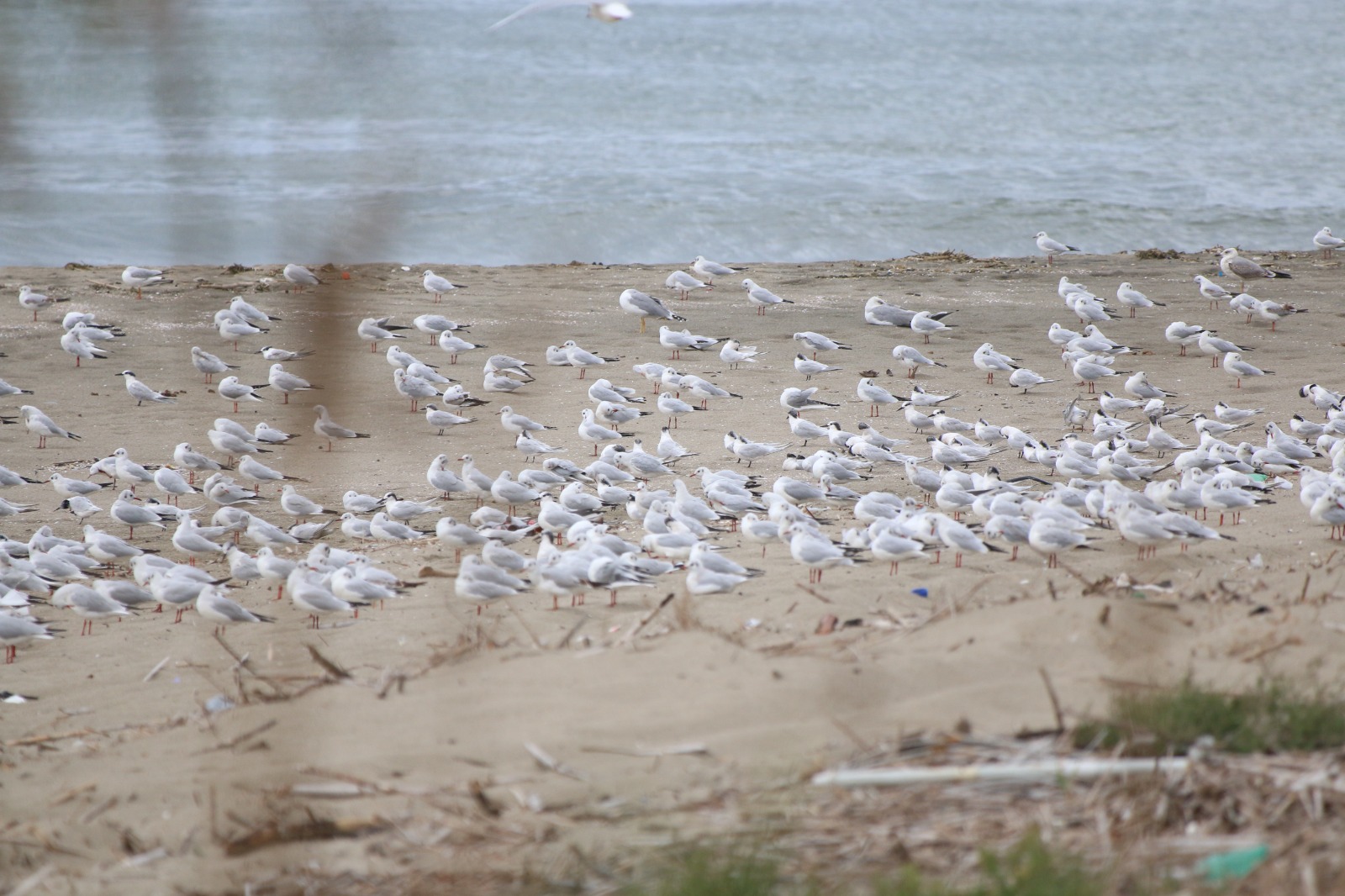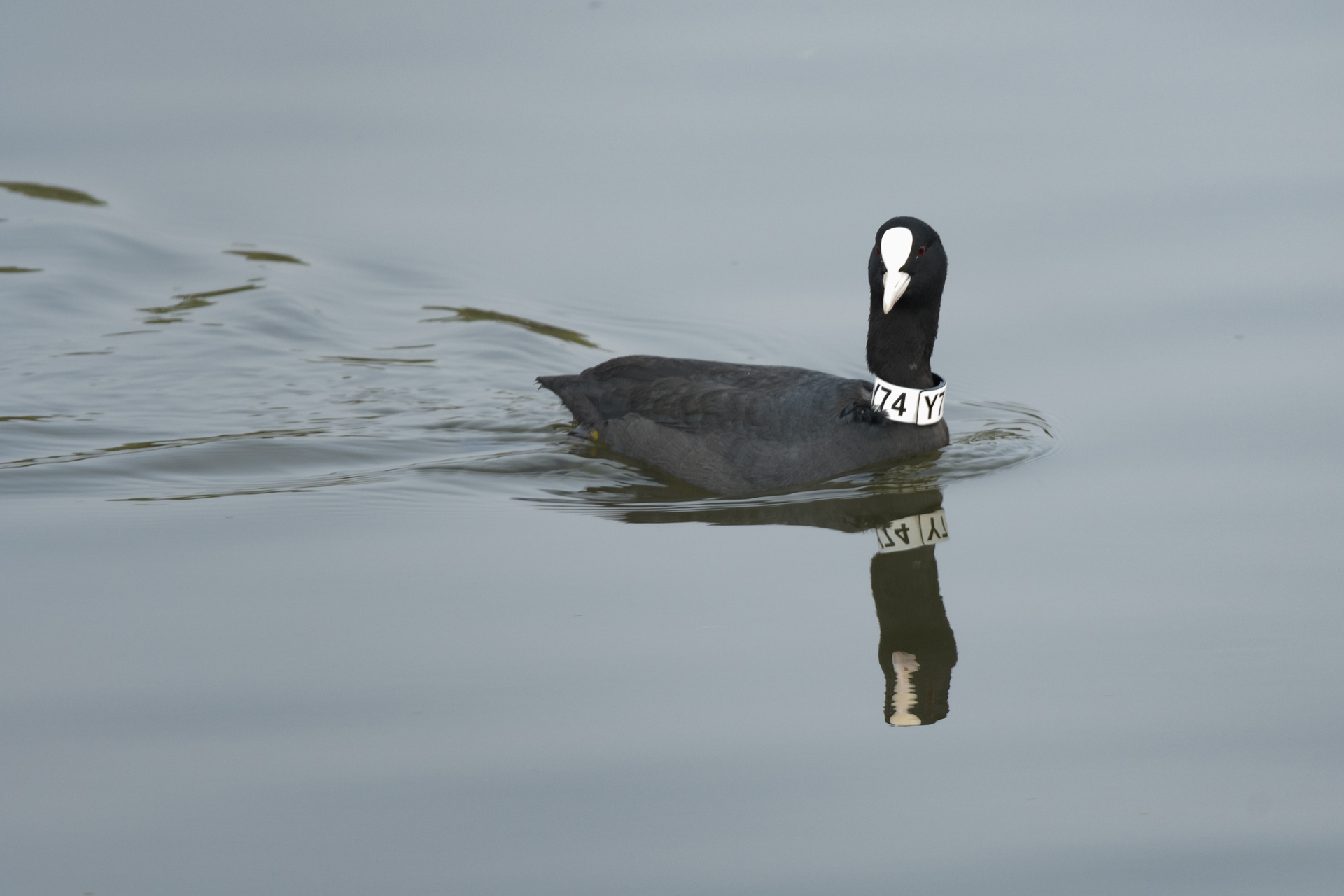The Eurasian Coot (Fulica atra) is a water bird belonging to the Rallidae family, widely spread throughout the Italian peninsula, in Sicily and in Sardinia. It is a monogamous species, strongly gregarious in winter and very territorial during the nesting season.
Coot’s feeding strategy appears to be highly diversified; these birds, in fact, can feed on aquatic (and non-aquatic) plants, algae, water invertebrates, insects, seeds and fruits, also accepting food made available by humans.
Eurasian Coots. Photo by Andrea Senese.

The Coot, which nests in inland and coastal wetland environments, in Italy is a sedentary and nesting, migratory and regular wintering species. During the colder months, this bird is more abundant due to large contingents that from central and northern Europe spend winter in Italy. It is not an endangered species (LC category according to the Italian Red List), with a population trend that appears to be stable.
In Campania region F. atra appears to be the most abundant water bird in the winter months (Fraissinet, 2017), with Lake Patria being one of the areas of national interest for the wintering of the species (up to 3,500 individuals, surveyed by S. Grimaldi and D. Mastronardi in 2015).
Eurasian Coots. Photo by Valerio Russo.

Lake Patria is not the only place where large numbers of these birds can be observed, in Campania, during winter. Recent regimentation of waters have transformed the Regi Lagni channel mouth (Castel Volturno, CE), making it one of the most suitable stopover areas for this species in the region.
The Regi Lagni – a network of channels used for the drainage of water in an area that was originally extremely marshy – are considered to be among the areas of greatest concern in terms of environmental pollution on the Tyrrhenian coast.
Despite these characteristics the area – being part of Riserva Naturale “Foce del Volturno – Costa di Licola” e “Lago di Falciano” and constantly monitored by ornithologists, birdwatchers and by the staff of the Stazione di Monitoraggio della Fauna “I Variconi” e “Le Soglitelle” – is considered one of the hotspots for birdwatching in southern Italy.
Hundreds of bird species, including numerous rarities, are observed every year by birdwatchers; this area is in fact visited by us on the occasion of Birding Naples day trip.
Regi Lagni coastal stetch.. Photo by Valerio Russo.

Last morning, while birding there together with our mentor Mark Walters and the wildlife photographer Marco d’Errico, we were lucky enough to observe an Eurasian Coot with a particular ornament: a white collar.
The neck collar, showing a clearly visible alphanumeric code, is actually a precious banding tool useful for deepening the knowledge of bird migrations. In fact, throughout the planet there is a strong network of researchers- specialized in the capture, banding and release of birds – who implement the bird ringing technique in order to obtain data of invaluable interest.
Reading the rings (or, in this specific case, the collars) allows us to reconstruct the history of the banded individual, its age, its origin, its movements, etc.
Thanks to the www.cr-birding.org website and thanks to the help of Alessandro Motta (local birdwatcher and avid ring-reader) we were able to obtain the first information regarding the individual: it was marked in Poland! We have therefore transmitted the data to the various responsible bodies and we hope to receive, in the coming weeks, all the details relating to this specimen.A Specimen that flew over 1000 km to reach our territories and to which we wish to spend a peaceful wintering period in our latitudes.
Polish banded Coot. Photo courtesy of Marco d'Errico.

As Napoli football’s team supporters, due also to the extreme proximity of the Regi Lagni to the sports center where the team trains, we couldn’t not resist to nickname it “Piotr” (waiting to know if it is a male or not given that in this species the plumages do not differ), in honor of our Polish pupil Piotr Zieliński and dreaming (ok, probably too much, we admit it) to be able to accompany our champion to a short birding tour at the end of a training session. Could somebody put us in touch !?
